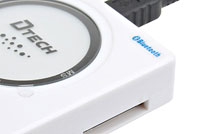 If – like us – you’ve been using digital cameras and electronics gizmos for years on end you might now be the proud owner of a huge pile of memory cards in a host of different formats, with a ton of cables scattered around the office.
If – like us – you’ve been using digital cameras and electronics gizmos for years on end you might now be the proud owner of a huge pile of memory cards in a host of different formats, with a ton of cables scattered around the office.
With limited USB ports available on laptops, most of us have had to invest in a card reader, and although we were pretty impressed with the Targus 14 in 1 USB Card Reader we reviewed last year, compared to Brando’s brand new, read-anything-that-moves USB Bluetooth Card Reader, it’s positively Spartan.
Brando’s new reader manages to accommodate an astonishing 52 formats and, for your enlightenment and enchantment, here’s the full list:
CF I, CF II, Extreme CF, Extreme III CF, Ultra II CF, HS CF, XS-XS CF, CF Elite PRO, CF PRO, CF PRO II, IMB MD, Hitachi MD, MagicStor, MS, MS PRO, MS Duo, MS PRO Duo, MS MG, MS MG PRO, MS MG Duo, MS MG PRO Duo, Extreme MS PRO, Extreme III MS PRO, Ultra II MS PRO, HS MS MG PRO, HS MS MG PRO Duo, HS MS PRO, HS MS PRO Duo, MS ROM, MS Select, SD, *MiniSD, HS Mini SD, Extreme SD, Extreme III SD, Ultra II SD, SD-Ultra-X, Ultra speed SD, SD PRO, SD Elite PRO, HS SD, MMC, MMC 4.0, HS MMC, HS RS MMC, RS MMC, RS MMC 4.0, DV-RS MMC, SM, SM ROM, XD, *T-Flash.
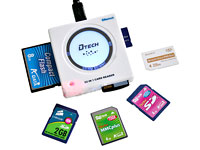 The USB 2.0 reader also conveniently doubles up as a Bluetooth hub, allowing you to wirelessly transfer data between Bluetooth devices such as mobile phones and PDAs.
The USB 2.0 reader also conveniently doubles up as a Bluetooth hub, allowing you to wirelessly transfer data between Bluetooth devices such as mobile phones and PDAs.
Being a device from our favourite weird’n’wonderful gizmo makers Brando, there’s also some totally pointless eye candy on offer, with the device cycling through “multi moody colours” – perfect if you’d like to host a mini disco by the pencil sharpener on your desk.
Brando claim a receiving/sending range of 20m, with the supplied cable measuring in at 64cm.
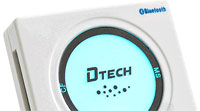 Compatible with Windows 98/98SE/ME/2000/XP, the 63x63x15mm reader weighs in at 76g and is powered by the host computer’s USB slot.
Compatible with Windows 98/98SE/ME/2000/XP, the 63x63x15mm reader weighs in at 76g and is powered by the host computer’s USB slot.
It’s as cheap as chips too, priced at just US$25.
We only wish that electronics manufacturers would stop inventing bloomin’ new formats every other day and made these multi-readers obselete….
 Vivendi Universal, the biggest music group on the planet have signed a deal with Spiralfrog to let surfers download the contents of its man-sized music catalogue for free.
Vivendi Universal, the biggest music group on the planet have signed a deal with Spiralfrog to let surfers download the contents of its man-sized music catalogue for free. Making it pay
Making it pay Desktop computing will be dead by the end of the decade and laptops will be following shortly after. That was the view of Graham Brown-Martin of Handheld Learning in an entertaining presentation at day two of the EIEF.
Desktop computing will be dead by the end of the decade and laptops will be following shortly after. That was the view of Graham Brown-Martin of Handheld Learning in an entertaining presentation at day two of the EIEF. As an illustration of this, and of his extremely cool mobile phone, Brown-Martin demonstrated a home made remix of the Snakes on a Plane teaser, edited with a mobile and a Macbook. The result was uploaded directly to YouTube from the phone then downloaded again (wirelessly) using a Nokia Internet tablet.
As an illustration of this, and of his extremely cool mobile phone, Brown-Martin demonstrated a home made remix of the Snakes on a Plane teaser, edited with a mobile and a Macbook. The result was uploaded directly to YouTube from the phone then downloaded again (wirelessly) using a Nokia Internet tablet.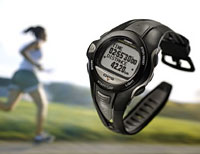 Most GPS enabled watches we’ve seen so far have been so ridiculously chunky that you’d need the muscles of Mick McManus to stop your arm dragging to the floor under the weight.
Most GPS enabled watches we’ve seen so far have been so ridiculously chunky that you’d need the muscles of Mick McManus to stop your arm dragging to the floor under the weight.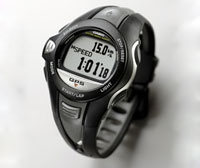 Despite its GPS abilities, the watch can’t display maps or offer latitude or longitude information on its tiny 49×72 full dot LCD screen, so there’s no chance of the bleeping t’ing guiding us home after a heavy session in the pub.
Despite its GPS abilities, the watch can’t display maps or offer latitude or longitude information on its tiny 49×72 full dot LCD screen, so there’s no chance of the bleeping t’ing guiding us home after a heavy session in the pub.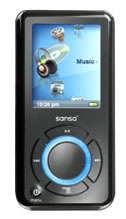 Forget the Nano, do the Sansa
Forget the Nano, do the Sansa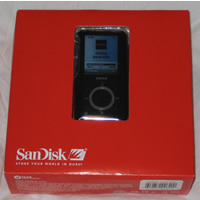 It glows
It glows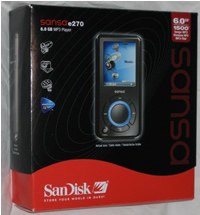 Video can be in AVI, MPEG-1 & MPEG-2 in MPEG, MPG, MPE or VOB (unprotected) formats. MPEG-4 in AVI format, DAT, ASF, QuickTime MOV, and WMV. Media Player 9 or 10 and Quicktime 6.5 or higher must be installed for QT MOV files.
Video can be in AVI, MPEG-1 & MPEG-2 in MPEG, MPG, MPE or VOB (unprotected) formats. MPEG-4 in AVI format, DAT, ASF, QuickTime MOV, and WMV. Media Player 9 or 10 and Quicktime 6.5 or higher must be installed for QT MOV files. Verdict
Verdict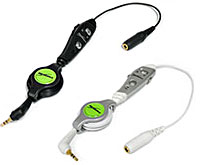 If you’re fed up with having to use the rubbish headphones that came with your Treo, you may want to consider investing in BoxWave’s Dual Handsfree Stereo Adapter.
If you’re fed up with having to use the rubbish headphones that came with your Treo, you may want to consider investing in BoxWave’s Dual Handsfree Stereo Adapter.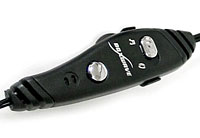 The unit features a simple (gold plated) 2.5mm to 3.5mm adapter which connects up to a small control unit which includes an integrated microphone, single-touch answer call button, volume control, and a switch for toggling between music and handsfree phone mode.
The unit features a simple (gold plated) 2.5mm to 3.5mm adapter which connects up to a small control unit which includes an integrated microphone, single-touch answer call button, volume control, and a switch for toggling between music and handsfree phone mode.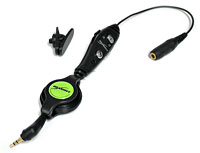 Giving it a bit of welly with some MP3s played back on
Giving it a bit of welly with some MP3s played back on 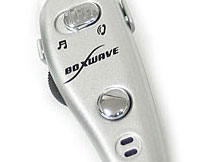 Overall, we found the BoxWave to be well worth the outlay (currently on offer from their site at $20.95) and a great investment if you want to be able to get the best music performance out of your Palm Treo 650/700p/700w.
Overall, we found the BoxWave to be well worth the outlay (currently on offer from their site at $20.95) and a great investment if you want to be able to get the best music performance out of your Palm Treo 650/700p/700w. Dell has announced that it is to recall millions of laptop batteries over fears that they could overheat and pose a fire hazard.
Dell has announced that it is to recall millions of laptop batteries over fears that they could overheat and pose a fire hazard. A battery of battery recalls
A battery of battery recalls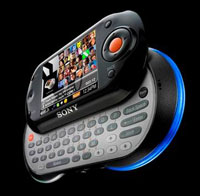 Sony has released details of the Mylo, a groovy new Wi Fi-enabled personal communications device aimed at Instant Messaging nutters.
Sony has released details of the Mylo, a groovy new Wi Fi-enabled personal communications device aimed at Instant Messaging nutters.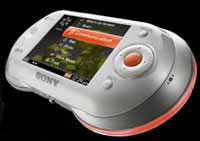 For teens who, like, don’t find email too slow for their hyperactive needs, there’s also an e-mail client, compatible with services such as Yahoo! Mail and the Gmail web mail service.
For teens who, like, don’t find email too slow for their hyperactive needs, there’s also an e-mail client, compatible with services such as Yahoo! Mail and the Gmail web mail service. Battery life looks pretty good too, with a claimed 45 hours of music playback and around seven hours of instant-message chatting/Web surfing.
Battery life looks pretty good too, with a claimed 45 hours of music playback and around seven hours of instant-message chatting/Web surfing.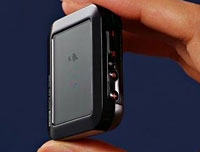 When it comes to convergence, we’re always on the look out for shiny new smartypants devices, even if we’re not always totally convinced about their usefulness.
When it comes to convergence, we’re always on the look out for shiny new smartypants devices, even if we’re not always totally convinced about their usefulness.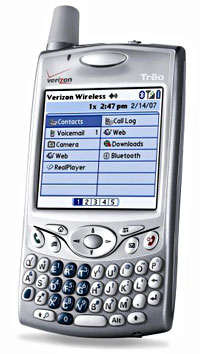 For a self confessed, gimme-gimme-shiny-new gadgets nutcase like me to be using a phone several years old speaks volumes of the strengths of the Treo 650.
For a self confessed, gimme-gimme-shiny-new gadgets nutcase like me to be using a phone several years old speaks volumes of the strengths of the Treo 650. If I’d have taken my Windows Mobile phone I dare say I would have been very well acquainted with stylus (and the reset button) by this time, but the Treo’s fabulous one-handed operation and rock solid performance made it a practical laptop replacement.
If I’d have taken my Windows Mobile phone I dare say I would have been very well acquainted with stylus (and the reset button) by this time, but the Treo’s fabulous one-handed operation and rock solid performance made it a practical laptop replacement.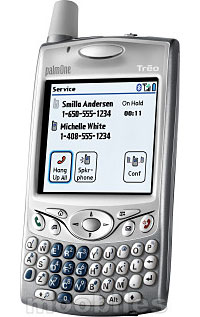 Palm has remained tight-lipped about their European product roadmap, with the web rife with rumours of both Windows and Palm new models going under ggroovy codenames like Hollywood, Lowrider, Nitro and Lennon.
Palm has remained tight-lipped about their European product roadmap, with the web rife with rumours of both Windows and Palm new models going under ggroovy codenames like Hollywood, Lowrider, Nitro and Lennon.